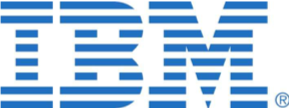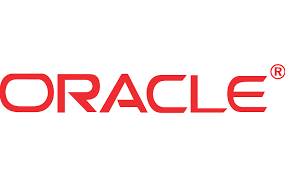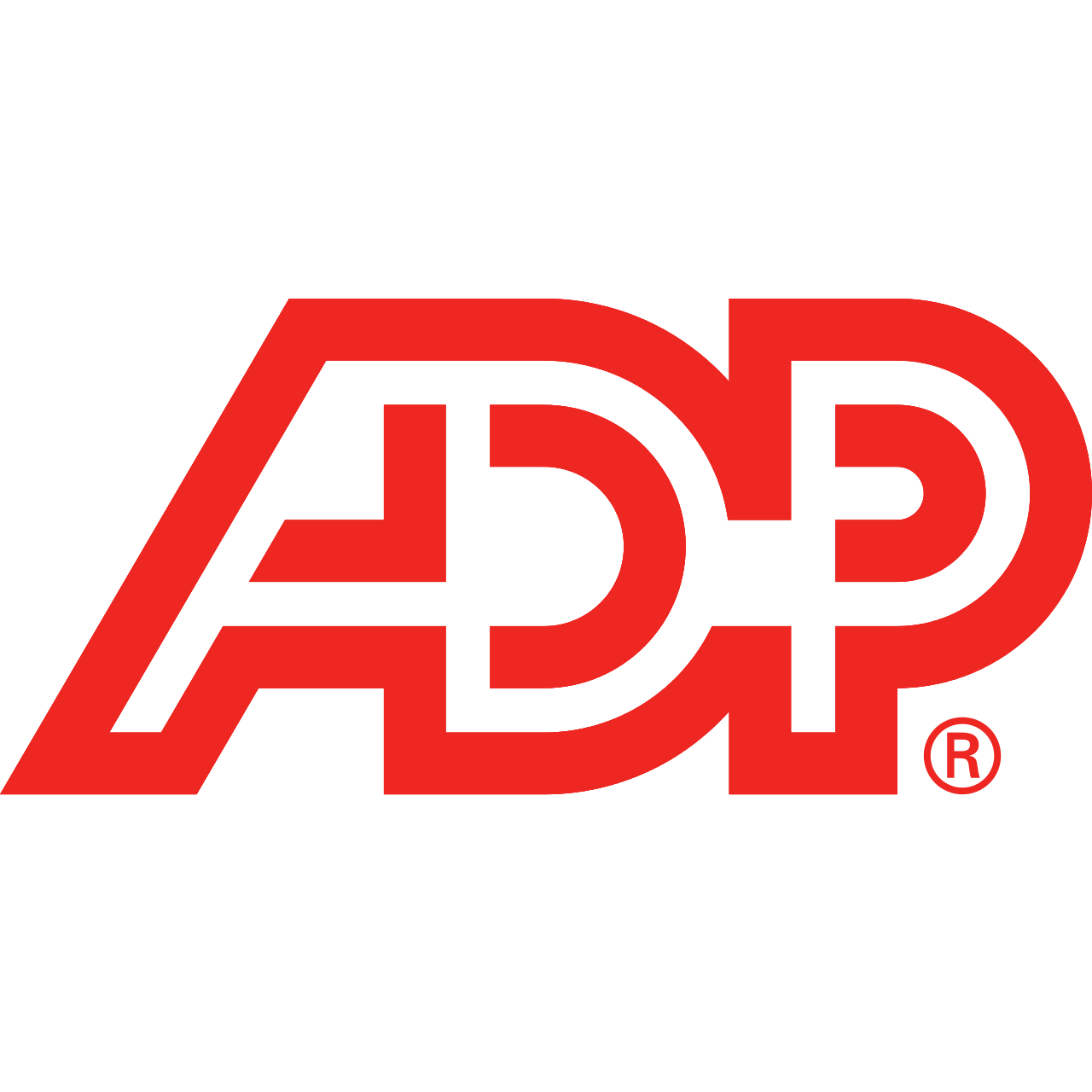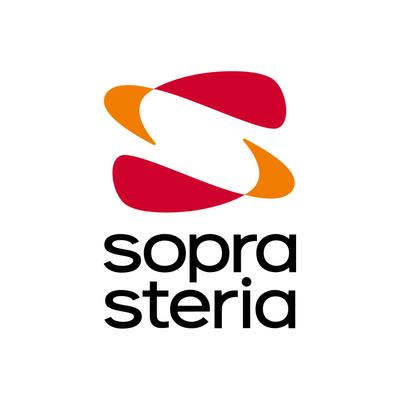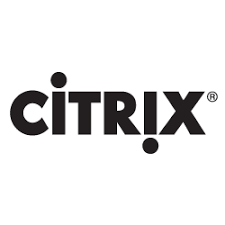Synthèse
The global market for SaaS (Software as a Service), a segment of the global software industry and a crucial component of cloud computing, has seen robust growth, with an estimated value of $257.47 billion in 2022. It is expected to continue growing at a compound annual growth rate (CAGR) of 19.7% between 2023 and 2030, potentially reaching over $1085 billion by the end of this forecast period. Growth drivers include the widespread adoption of mobile devices, artificial intelligence and the need for companies to implement cost-effective solutions to restructure their business models.
The European SaaS market is estimated to be worth 56 billion euros in 2022, with the UK, Germany and France leading the way. France in particular demonstrated dynamic market potential, with SaaS accounting for 45% of its software sales by 2021. Factors contributing to the market's expansion are the democratization of cloud computing and the increase in pethe French market for cloud solutions is expected to exceed 27 billion euros by 2025.
SaaS products have diverse applications, ranging from messaging and CRM to human resources management, with different pricing models, including subscriptions, often preferred due to their economic benefits for customers and consistent revenues for providers.
The market is segmented into leaders, specialists and new entrants, with major players such as Microsoft and Salesforce illustrating the range of these categories. Finally, market challenges cover R&D, cybersecurity, CSR activities, recruitment, external growth and changing distribution methods due to digital transformation
Demand trends in the SaaS market and their impact on growth potential
In recent years, the Software as a Service (SaaS) market has experienced an upward trend, becoming an increasingly central component of software sales in France. By 2021, almost half of all software sales will be attributed to SaaS, a considerable increase on the 10% observed ten years earlier. Digging deeper into the dynamics shaping demand in this sector, several key factors and figures emerge. A significant proportion of SaaS sales, as much as 81%, come from the private sector, with large enterprises being the main drivers. These companies primarily use SaaS solutions to optimize and streamline day-to-day business operations, such as accounting and product management.
A unique feature of the French market is that small and medium-sized enterprises (SMEs) have a lower-than-average adoption rate of SaaS solutions than their European counterparts, suggesting a potential for growth. In addition, the democratization of cloud computing is boosting demand for SaaS. Companies are increasingly integrating cloud computing solutions. Currently, around 29% of French companies use cloud computing solutions, a figure that pales in comparison with the European average of 41% and adoption rates in the Nordic countries, which are twice as high. This gap indicates a vast potential for growth in France.
Demand for SaaS is also fragmented across different sectors, with industries such as transportation showing significant penetration rates for cloud software, particularly in office automation, where it has reached 51%. The healthcare and education sectors are catching up in the adoption of SaaS solutions, marking an evolution from traditional laggards to innovative applications. In the future landscape of the SaaS market, the subscription model seems to be the favorite of software publishers and customers alike, with 70% of companies preferring this contractual mode. The preference for subscription contracts - which tend to be long-term commitments, with an average duration of three years or more - underlines the long-term stability of the SaaS model and its feasibility for stakeholders.
Given the above factors, it's clear that demand for SaaS in France is underpinned by the appeal of scalable, flexible cloud solutions, industry needs and the economic benefits of subscription models. While large enterprises are currently the main customers, SMEs and sectors lagging behind in SaaS adoption present opportunities for market expansion. General market conditions reveal a promising trajectory for SaaS demand, suggesting that the key players shaping the SaaS market landscape will continue to grow.oning the SaaS market landscape will be The SaaS market landscape abounds with a plethora of dynamic and influential players, each carving out a niche with unique offerings and contributions. This diversity reflects the vitality of the market and the constant evolution of cloud-based solutions that meet the various needs of the industry.
Let's take a closer look at some of the most remarkable companies actively defining and redefining the SaaS ecosystem.
- Microsoft: An industry titan, Microsoft's historical legacy has gracefully transposed its prowess into the cloud era. The company's SaaS offerings, including the ubiquitous Office 365 suite, testify to its commitment to providing comprehensive productivity and collaboration tools that thrive in a connected world.
- IBM: A venerable name synonymous with innovation, IBM continues to leverage its deep technological expertise to deliver robust SaaS solutions. The company's suite of AI-powered analytics and cybersecurity services is at the forefront of business transformation in the digital age.
- Oracle: With a long history in database management, Oracle's pivot to cloud services reflects its ability to adapt. The company's cloud infrastructure and suite of enterprise applications consolidate its role as a key player in helping businesses navigate the twists and turns of digital data management.
- ADP: Traditionally known for its payroll services, ADP has broadened its horizons to offer a suite of human capital management solutions via a SaaS model. This strategic move enables ADP to meet the growing demand for comprehensive, cloud-based HR systems in companies of all sizes.
- Salesforce: CRM giant Salesforce has become the epitome of SaaS success, offering a powerful platform that has revolutionized customer relationship management. Its customer-centric approach and ongoing innovation make Salesforce a popular choice for organizations striving to achieve unrivalled customer engagement.
- SAGE: Focused on accounting and financial management, SAGE has made considerable progress in its transition to the cloud. Small and medium-sized businesses benefit greatly from the company's accessible, user-friendly SaaS solutions, which streamline financial operations.
- Cegedim: Specializing in healthcare, Cegedim offers a variety of SaaS solutions designed to improve patient data management and healthcare workflows. Its focus on compliance and efficiency positions Cegedim as an integral player in the digital transformation of the medical sector.
- Sopra Steria: Providing a wide range of IT services and software, Sopra Steria's SaaS offerings meet the needs of digital transformation. Its dedication to innovation and customer satisfaction resonates deeply with industries seeking to capitalize on digital transformation.
à la compréhension de ce marché
Détail du contenu
 Informations
Informations
- Nombre de pages : 30 pages
- Format : Version digitale et PDF
- Dernière mise à jour : 14/09/2023
 Sommaire et extraits
Sommaire et extraits
1 Market overview
1.1 Market definition
SaaS - "software as a service" - is a new software distribution model. Two characteristics distinguish SaaS from traditional software: remote use and price.
In the case of traditional software, it is used as a physical product, of which the user acquires definitive ownership on purchase. The purchase of the Office Family Pack is a typical example of this first type of software.
SaaS, on the other hand, is used remotely, with variable pricing. According to GartnersaaS can be defined as "an application that is owned, offered and managed by one or more vendors. The provider offers this application on the basis of a set of codes and definitions relating to the data used, based on a "one-to-many" model. one-to-many " model, with revenues indexed to frequency of use or generated on a subscription basis. Salesforce and SAP are among the best-known and most widely used examples. SaaS is therefore not used as physical software, but as virtual software used as a service through the cloud.
However, understanding the SaaS market remains variable, given the complexity of the services offered by software publishers.
Two approaches are possible:
- SaaS is seen as a software product in its own right, meeting a specific business need, such as human resources management. SaaS is then an integral part of the cloud computing system.
- When it comes to marketing, SaaS is seen as an IT solution that can be marketed in the same way as hardware (a computer) or a service (consulting, for example), but as a subscription rather than an acquisition.
In the first approach, SaaS is the ultimate pillar of the three elements used by cloud computing. The aim of cloud computing is to make computing or storage capacity available to users, whether private or public, remotely. SaaS thus complements the other two pillars of cloud computing. The first is infrastructure - or "IaaS" (Infrastructure as a Service) - which is required to set up a remote network. The second, the platform - or "PaaS" (Platform as a service) - enabling the establishment of a dedicated environment for hosting the software that SaaS represents.
From this perspective, SaaS is the heir to application services, known as ASP (Application Service Provider). SaaS orchestrated a fundamental difference from its predecessor, whose principle was to install and use applications directly on a computer. By revolutionizing the use of applications via the Internet, SaaS has not only changed the way applications are used - the main benefit of which lies in their remote use - but also the possibilities for integration and partnership.
From a commercial point of view, SaaS is integrated into the software segment, and is therefore one of the three traditional segments of the IT industry, alongside hardware (i.e. computer, mobile) and software.i.e. computer, mobile) and services (i.e. management consulting and database integration). The software segment covers networking, development and usage applications. These applications are either physical (traditional software) or remote (SaaS).
SaaS is designed for both private and professional use. In this context of professional use, SaaS supports companies across the entire value chain. Several categories of software are commonly distinguished:
- Enterprise resource management (e.g. accounting, suppliers). This software is known as ERP - Enterprise Resource Planning;
- Customer relationship management (e.g.: relationship history). These are known as CRM - Customer Relationship Management;
- Product management (e.g. after-sales service, localization). These are known as PLM - Product Lifecycle Management;
- Office automation (e.g. spreadsheets);
- Design (e.g. computer-aided manufacturing).
By 2021, 45% of software sales will be generated by SaaS. This percentage is set to increase at the expense of traditional software, for a variety of reasons (lower cost, more practical, etc.).
1.2 A fast-growing global market
evolution of worldwide SaaS revenues World, **** - ****, in billions of dollars
The global SaaS market is estimated at $***.** billion in ****, and is expected to grow at a CAGR of **.*% over the period ****-****, reaching over $**** billion by the end of this period. The growing use of mobile devices and artificial intelligence ...
1.3 The French market: a dynamic market with great potential
The SaaS model, a segment of the software market, is growing in popularity in France. In ****, **% of software sales will be generated by SaaS, whereas in ****, this segment represented only **%[***].
The market for SaaS solutions France, **** - ****, in billions of euros Source: ****
The French SaaS market has been enjoying sustained growth ...
2 Demand analysis
2.1 Large companies, the main customers
Demand driven by industry, the public sector and finance
As the SaaS market's main outlet, the private sector (***) represents the main development opportunity for software suppliers. From the outset, SaaS software has been designed to optimize and facilitate the management of day-to-day business activities, such as accounting and product management.
Breakdown ...
2.2 Demand driven by the democratization of cloud computing
First and foremost, this democratization requires high cloud software penetration rates. Certain sectors are more or less sensitive to the use of this type of software, but overall penetration rates are significant:
Office cloud software penetration rates by sector France, ****, in % of companies INSEE
in the transportation sector, for example, the ...
2.3 SaaS: an internationalized service
A large proportion of software publishers' sales, **% of which are generated by SaaS solutions, are generated abroad:
Breakdown of software sales by geographic region World, ****, in Source: ****
Indeed, foreign sales account for **% of the total, down slightly from **% the previous year. This proportion has remained relatively stable over the past five ...
2.4 Demand drivers: the subscription contracting method
As explained earlier, one of the advantages of the SaaS model is economic. Indeed, the subscription format appeals not only to customers, but also to publishers. This explains the resilience of the SaaS market during the pandemic.
Software publishers' preferred method of contractualization France, ****, in Source: ****
In fact, **% of the *** software ...
2.5 Demand drivers: customer relationship management (CRM)
Customer relationship management is part of a policy of mastering customer knowledge and monitoring customer exchanges. While the latest software products combine these two practices, there are also contact centers that make the most of the data they collect, and support their customers in their decision-making thanks to steering tools, key ...
2.6 Barriers to SaaS demand
As SaaS solutions are not perfect, it's important to point out the few drawbacks of this model that are likely to dampen demand. These include[***]:
the need for a good Internet connection: no offline use, so the company is entirely dependent on the quality of the connection; strong dependence on the ...
3 Market structure
3.1 SaaS market value chain
Source: ****
3.2 The software market: a fast-growing market
A first positive sign for the SaaS market is that software publishers' sales are rising sharply, which testifies to the dynamism of demand on the software market (***):
Trend in total sales for software publishers France, **** - ****, in billions of euros Source: ****
The software market has indeed seen significant growth since ****, with ...
3.3 A segmented software market
Among software publishers, it is possible to distinguish between sector-based publishers (***) and individuals and games, representing a very small share of the publishing market. The breakdown of players in the software publishing market is as follows:
Sales by publisher category France, ****, in billions of euros Source: ****
Sector-specific publishers are the biggest ...
3.4 R&D, cybersecurity, CSR, recruitment, external growth and distribution: current market challenges
Research and development
Innovation is a top priority for French software publishers, as evidenced by their significant investment in research and development (***). Indeed, they devote **% of their sales to R&D, and a third of their total workforce is dedicated to these activities:
Evolution of R&D workforce as a percentage ...
3.5 Interview with Alex Delivet, founder of Collect
Marine: Welcome to the Niche, the podcast that analyzes the niche market with the entrepreneurs who are shaking things up. I'm Marine and I work at Businesscoot, the start-up that's dusting off market research. Before you start, subscribe to our podcast on Spotify and Apple Podcast. And now for today's niche: ...
4 Offer analysis
4.1 From product price to service price
SaaS implies a new way of pricing
In their ADP versions, software followed a traditional pricing logic: the software end-user paid a fixed price upon acquisition.
The development of the cloud has brought about a fundamental shift in software pricing, for two reasons.
Firstly, the flexibility, scale and interaction offered by ...
4.2 A protean SaaS software offering
It's important to differentiate between the three layers of service offerings that can coexist today:
IaaS (***): basic infrastructure in the form of computing, storage and bandwidth capacity. It's an offer aimed at businesses, but above all at application service providers. Amazon Web Services is typical of this category, with its offer ...
4.3 SaaS software offerings and inflation
The SaaS market is no exception to the high inflation experienced by French consumers over the past two years. **.**% of SaaS software increased its price between **** and ****.
SaaS price increases by subscription type France, **** - ****, as % of total Source: ****
Software prices rose by over *% on average between **** and ****, slightly more than ...
5 Regulations
5.1 Regulations governing SaaS
As a processor of its customer's personal data, the SaaS software publisher has a great many obligations with regard to Regulation EU ****/*** of the European Parliamenten and of the Council of April **, **** on the protection of individuals with regard to the processing of personal data and on the free movement of ...
6 Positioning the players
6.1 Segmentation
The SaaS market can be divided into three categories:
Leaders. This group brings together the market's historical players, who developed the first computerized management solutions for businesses from the ****s onwards, and have gradually made their offerings more complex. Most of these companies are American, and offer generalist services. Adapting their ...
6.2 Summary of key points
The French SaaS market has experiencedsustained growth since ****, with a clear acceleration from **** onwardsto reach record sales of* billion in ****, compared with *.* billion in **** and *.* billion in ****.
Demand
Lhe private sector accounted for **% of Saas sales in ****. Industry (***) are the main private-sector outlets. The public sector accounts for **% of demand.
The ...
- Cegedim
- IBM
- Oracle
- ADP LLC
- Sopra Steria
- Citrix
- Algolia
- Talend
- Sage
- XEFI
- Aircall
- SAP
- Atos Eviden
- Microsoft
 Liste des graphiques
Liste des graphiques
- Évolution du marché des SaaS
- Répartition des parts du marché des SaaS
- Le marché des solutions SaaS
- Répartition du chiffre d'affaires du marché des SaaS, par secteur
- Evolution du marché des solutions cloud
Toutes nos études sont disponible en ligne et en PDF
Nous vous proposons de consulter un exemple de notre travail d'étude sur un autre marché !
Dernières actualités
Entreprises citées dans cette étude
Cette étude contient un panorama complet des entreprises du marché avec les derniers chiffres et actualités de chaque entreprise :
 Choisir cette étude c'est :
Choisir cette étude c'est :
Accéder à plus de 35 heures de travail
Nos études sont le résultat de plus de 35 heures de recherches et d'analyses. Utiliser nos études vous permet de consacrer plus de temps et de valeur ajoutée à vos projets.
Profiter de 6 années d'expérience et de plus de 1500 études sectorielles déjà produites
Notre expertise nous permet de produire des études complètes dans tous les secteurs, y compris des marchés de niche ou naissants.
Notre savoir-faire et notre méthodologie nous permet de produire des études avec un rapport qualité-prix unique
Accéder à plusieurs milliers d'articles et données payantes
Businesscoot a accès à l'ensemble de la presse économique payante ainsi qu'à des bases de données exclusives pour réaliser ses études de marché (+ 30 000 articles et sources privées).
Afin d'enrichir nos études, nos analystes utilisent également des indicateurs web (semrush, trends…) pour identifier les tendances sur un marché et les stratégies des entreprises. (Consulter nos sources payantes)
Un accompagnement garanti après votre achat
Une équipe dédiée au service après-vente, pour vous garantir un niveau de satisfaction élevé. (+33) 9 70 46 55 00
Un format digital pensé pour nos utilisateurs
Vous accédez à un PDF mais aussi à une version digitale pensée pour nos clients. Cette version vous permet d’accéder aux sources, aux données au format Excel et aux graphiques. Le contenu de l'étude peut ainsi être facilement récupéré et adapté pour vos supports.
 Nos offres :
Nos offres :
the software as a service market | France
- Quels sont les chiffres sur la taille et la croissance du marché ?
- Quels leviers tirent la croissance du marché et leur évolution ?
- Quel est le positionnement des entreprises sur la chaine de valeur ?
- Comment se différencient les entreprises du marché ?
- Données issues de plusieurs dizaines de bases de données
Pack 5 études (-15%) France
- 5 études au prix de 75,6€HT par étude à choisir parmi nos 800 titres sur le catalogue France pendant 12 mois
- Conservez -15% sur les études supplémentaires achetées
- Choisissez le remboursement des crédits non consommés au terme des 12 mois (durée du pack)
Consultez les conditions du pack et de remboursement des crédits non consommés.
- 03/04/2024 - Mise à jour des données financières de l'entreprise SAP
- 02/04/2024 - Mise à jour des données financières de l'entreprise Talend
- 02/04/2024 - Mise à jour des données financières de l'entreprise Sage
- 02/04/2024 - Mise à jour des données financières de l'entreprise Algolia
- 02/04/2024 - Mise à jour des données financières de l'entreprise Citrix
- 03/03/2024 - Mise à jour des données financières de l'entreprise Cegedim
- 01/03/2024 - Mise à jour des données financières de l'entreprise Microsoft
- 01/03/2024 - Mise à jour des données financières de l'entreprise Sopra Steria
- 01/03/2024 - Mise à jour des données financières de l'entreprise Oracle
- 01/03/2024 - Mise à jour des données financières de l'entreprise IBM
- 02/01/2024 - Mise à jour des données financières de l'entreprise SAP
- 03/12/2023 - Mise à jour des données financières de l'entreprise Sage
- 03/12/2023 - Mise à jour des données financières de l'entreprise Talend
- 03/12/2023 - Mise à jour des données financières de l'entreprise Algolia
- 03/12/2023 - Mise à jour des données financières de l'entreprise Citrix
- 02/12/2023 - Mise à jour des données financières de l'entreprise Cegedim
- 04/11/2023 - Mise à jour des données financières de l'entreprise Microsoft
- 04/11/2023 - Mise à jour des données financières de l'entreprise Sopra Steria
- 04/11/2023 - Mise à jour des données financières de l'entreprise Oracle
- 04/11/2023 - Mise à jour des données financières de l'entreprise IBM
- 01/10/2023 - Mise à jour des données financières de l'entreprise SAP
- 14/09/2023 - L'étude a été entièrement mise à jour par un analyste Businesscoot. En plus de cette revue complète, des informations sur la R&D, la RSE, le recrutement et la croissance externe dans le secteur ont été ajoutées.
- 02/09/2023 - Mise à jour des données financières de l'entreprise Talend
- 02/09/2023 - Mise à jour des données financières de l'entreprise Sage
- 02/09/2023 - Mise à jour des données financières de l'entreprise Algolia
- 02/09/2023 - Mise à jour des données financières de l'entreprise Citrix
- 01/09/2023 - Mise à jour des données financières de l'entreprise Cegedim
- 03/08/2023 - Mise à jour des données financières de l'entreprise Microsoft
- 03/08/2023 - Mise à jour des données financières de l'entreprise Sopra Steria
- 03/08/2023 - Mise à jour des données financières de l'entreprise Oracle
- 28/07/2023 - Mise à jour des données financières de l'entreprise IBM
- 04/06/2023 - Mise à jour des données financières de l'entreprise SAP
- 20/05/2023 - Mise à jour des données financières de l'entreprise Talend
- 20/05/2023 - Mise à jour des données financières de l'entreprise Sage
- 20/05/2023 - Mise à jour des données financières de l'entreprise Algolia
- 20/05/2023 - Mise à jour des données financières de l'entreprise Citrix
- 19/05/2023 - Mise à jour des données financières de l'entreprise Cegedim
- 02/05/2023 - Mise à jour des données financières de l'entreprise Microsoft
- 02/05/2023 - Mise à jour des données financières de l'entreprise Sopra Steria
- 02/05/2023 - Mise à jour des données financières de l'entreprise Oracle
- 16/04/2023 - Mise à jour des données financières de l'entreprise IBM
- 03/03/2023 - Mise à jour des données financières de l'entreprise SAP
- 19/02/2023 - Mise à jour des données financières de l'entreprise Talend
- 19/02/2023 - Mise à jour des données financières de l'entreprise Sage
- 19/02/2023 - Mise à jour des données financières de l'entreprise Algolia
- 19/02/2023 - Mise à jour des données financières de l'entreprise Citrix
- 18/02/2023 - Mise à jour des données financières de l'entreprise Cegedim
- 01/02/2023 - Mise à jour des données financières de l'entreprise Sopra Steria





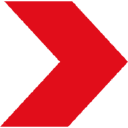 Xefi, entreprise lyonnaise, dynamise sa croissance numérique - 02/02/2024
Xefi, entreprise lyonnaise, dynamise sa croissance numérique - 02/02/2024
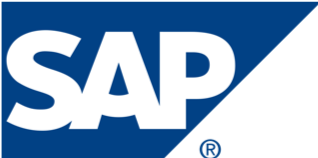 Logiciels : 8.000 postes affectés chez SAP par une restructuration - 24/01/2024
Logiciels : 8.000 postes affectés chez SAP par une restructuration - 24/01/2024
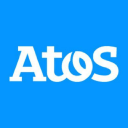 Atos : un dossier explosif - 30/08/2023
Atos : un dossier explosif - 30/08/2023

